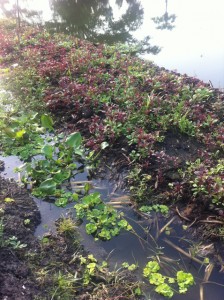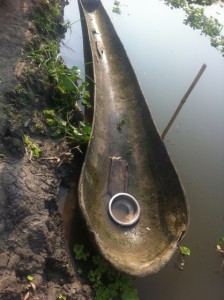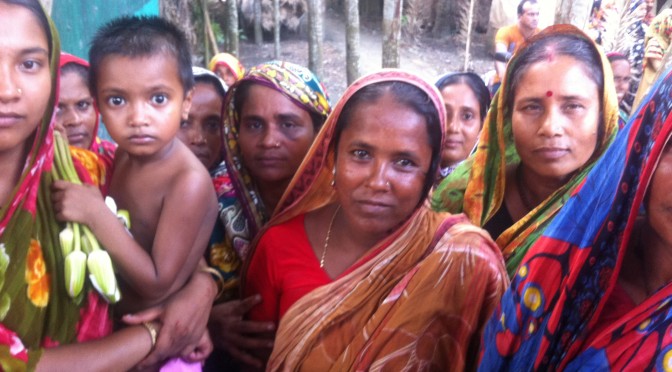It’s been ten years since I was last here. A lot has changed in Jessore, Khulna and Satkhira. There are more shops in what used to be the sleepy Khulna neighborhood of Khalispur.
Much has happened in Jessore and Satkhira too. Business is booming in all kinds of shops from furniture to clothing. New hotels have sprung up and more fish are being farmed in freshly dug ponds. But many things haven’t changed.
Poor people are still poor. So many families still struggle with hunger, malnutrition, and poverty. Not much has changed here.
In some ways things are worse. For the last 15 years large parts of Satkhira have remained under water for up to half the year. These areas have been deliberately flooded for commercial shrimp farmers. But the flooding means there’s more salt in the soil and paddy and jute don’t grow anymore. Thousand of families have been affected. Some have left and others are forced to adapt to this changed environment. So life still goes on. And that’s the wonder of Bangladesh. People are resilient; they adapt.
There are tragic stories everywhere. That’s true. But there are also inspirational ones. A helpful push or some handholding can send families on an extraordinary journey.
Adapting to Change in the Southwest
In a village in Chalna Shahara, a woman in her mid thirties changed her whole life with a gift of a handful of goats, a ten-thousand-taka loan and few words of wisdom on how to protect her animals against disease.
Her small family used to survive on one meal a day but now they have three meals. Their dilapidated mud home has become a tin house. And her two children got into the local government school. She wants her son to be a doctor and her daughter wants to be a policewoman.

In a waterlogged village in Keshabpur a group of twenty women earn their living excavating canals. The excavation reduces water logging. But there’s more to this. The women and their husbands lease the canal and grow saline tolerant vegetables on rafts of dried hyacinths. They also farm fish in the canal.
In this flooded village boats are made from small fallen trees. Villagers waterproof the tree-boats with used plastic cement bags. The women use the boats to tend their floating vegetable patches. Necessity is truly the mother of invention!

In the past men used to work on farms as day labourers. But there’s only one crop a year in Statkhira these day. So most farmers have less work than before.
These families have had to be creative and find something to produce all year round, whether it’s fish or vegetables. And of course the vegetables have to grow in salty water. So they have a regular income. Parveen quipped, “We didn’t use to have enough food to eat. But now we buy sarees and Fair-and-Lovely!”
Before these women were struggling to feed their families. But now they are buying beauty products. After taking care of their families’ needs they can now indulge in a well-earned luxury.
Connections Posts
Quay Asia’s Connections posts put us in touch with the realities of life in Asia’s developing economies. They are observations from our work with ordinary people struggling to earn a living or even survive. We often talk about economic growth, poverty and livelihoods in abstract terms. We tend to aggregate and average; to estimate and generalize. And we sometimes lose sight of what this all means to poor people. Connections try to bring us back to reality.

2 replies on “Invention from Neccessity”
The floating vegetable gardens are amazing. The gardens seem to cope with the increased water levels and increased water salinity. And of course water hyacinths are readily available. Who came up with this idea? Was it a local community initiative or a solution created by an NGO or agricultural specialist?
A few poor but ingenious farmers living in water logged areas in Bangladesh have probably been growing vegetables on these floating hyacinth beds for quite some time. But the technique was relatively unknown outside the tiny pockets where it started. Knowledgable employees of a local NGO recently told me they first saw the floating vegetable gardens in Pirojpur, a coastal district south of Khulna.
The technique has been promoted by Shiree. Shiree means steps or ladder in Bengali. And the Shiree project is part of the UKaid programme in Bangladesh managed by the UK Department for International Development.
Shiree supported a few local and international NGOs to replicate and popularise the technique in different parts of Bangladesh. Poor farmers living in water logged areas in Northern Bangladesh and Southwest Bangladesh are now very happily growing vegetables on these hyacinth rafts round the year.